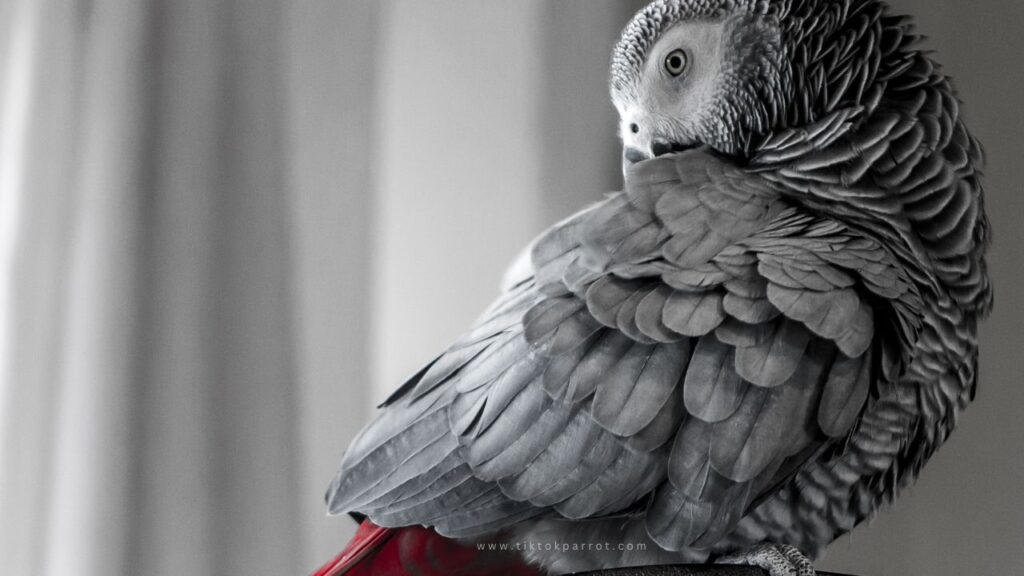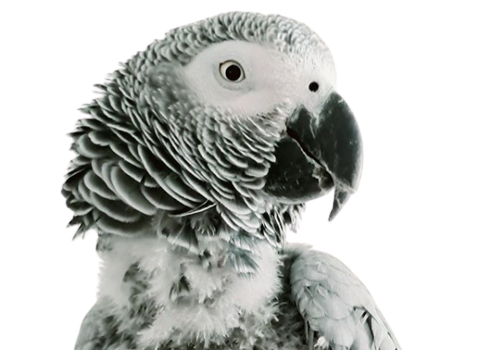Let’s talk about sleep. You know, that thing we all crave but never seem to get enough of? Well, guess what? Your African Grey Parrot feels the same way. These feathered Einsteins are not just masters of mimicry and problem-solving; they’re also experts at catching some serious Z’s. But here’s the kicker: how they sleep in the wild versus captivity is like comparing camping in the Amazon rainforest to crashing on your couch with Netflix on. Spoiler alert: it’s not the same.
Table of Contents
So, grab a cup of coffee (or tea, if you’re fancy), and let’s dive into the fascinating world of African Grey Parrots and their sleep habits. Trust me, it’s more interesting than it sounds. And who knows? You might even pick up a tip or two to improve your own sleep game.
Sleeping in the Wild: The Original African Grey Sleepover

Picture this, it’s dusk in the dense rainforests of West and Central Africa. The sun is setting, the jungle is alive with sounds, and your African Grey Parrot is ready to call it a day. In the wild, these birds are all about routine. They wake up with the sun and wind down as it sets. It’s like they’ve got their own built-in alarm clock—no snooze button required.
African Greys in the wild sleep in flocks, perched high up in trees. Why? Because safety first, folks. Sleeping in a group means there’s always someone on the lookout for predators. It’s like having a neighborhood watch, but with feathers. Plus, being up high gives them a bird’s-eye view (pun intended) of any potential threats.
Their sleep is deep and uninterrupted, thanks to the natural rhythm of the jungle. No streetlights, no late-night TV binges, just the soothing sounds of nature. It’s the ultimate sleep sanctuary.
Sleeping in Captivity: When the Jungle Meets the Living Room
Now, let’s fast-forward to your living room. Your African Grey is perched in its cage, surrounded by the comforts of modern life. But here’s the thing: captivity is a far cry from the wild. Sure, your parrot has a cozy cage, plenty of food, and maybe even a few toys, but sleep? That’s a whole different story.
In captivity, African Greys face a bunch of sleep disruptors. Artificial lighting, noisy neighbors, and even your late-night Netflix marathons can throw off their sleep cycle. Imagine trying to sleep with a disco ball spinning above your head. Not exactly restful, right?
And let’s not forget about the lack of flockmates. In the wild, African Greys sleep in groups for safety and companionship. In captivity, they’re often alone, which can make them feel vulnerable. It’s like sleeping in a haunted house—every little noise can spook them.
The Science of Sleep: Why Your Parrot Needs Its Beauty Rest
You might be wondering, “Why is sleep such a big deal for African Grey Parrots?” Well, just like us, these birds need quality sleep to function at their best. Sleep is essential for their physical health, mental sharpness, and emotional well-being.
African Greys are known for their intelligence, and sleep plays a crucial role in keeping their brains in tip-top shape. During sleep, their brains process and store information, helping them learn new words, solve puzzles, and remember where they hid that treat you gave them last week.
But here’s the kicker: sleep deprivation can wreak havoc on your parrot’s health. It can lead to stress, irritability, and even feather plucking. Think of it as your parrot’s version of a caffeine crash—except they can’t just grab a cup of coffee to fix it.
Signs Your African Grey Isn’t Getting Enough Sleep

So, how do you know if your parrot is sleep-deprived? Here are a few telltale signs:
- Grumpiness: If your usually cheerful parrot is suddenly acting like a grumpy old man, it might be due to lack of sleep.
- Excessive Vocalization: Is your parrot squawking more than usual? It could be their way of saying, “Hey, I’m tired!”
- Feather Plucking: Sleep deprivation can lead to stress, which often manifests as feather plucking.
- Lethargy: If your parrot is unusually sluggish or uninterested in play, it might be time to check their sleep habits.
How to Create a Sleep-Friendly Environment for Your African Grey
Now that we’ve covered the importance of sleep, let’s talk about how you can help your African Grey get the rest it deserves. Here are some tips to create a sleep-friendly environment:
- Mimic Natural Light Cycles: Use blackout curtains to simulate natural darkness and avoid exposing your parrot to artificial light at night.
- Provide a Quiet Space: Place their cage in a quiet, low-traffic area of the house. If noise is an issue, consider using a white noise machine to mask disruptive sounds.
- Ensure a Comfortable Sleeping Perch: Offer a variety of perches, including flat or padded options for resting. Avoid placing perches too close to food or water to prevent nighttime disturbances.
- Maintain a Consistent Routine: Establish a regular bedtime and wake-up time. Use calming rituals, like soft music or dim lighting, to signal bedtime.
- Monitor Temperature and Humidity: Keep the room at a comfortable temperature (65-80°F or 18-27°C). Use a humidifier if the air is too dry, especially in winter.
- Limit Nighttime Disturbances: Cover the cage partially or fully to create a sense of security. Avoid interacting with your parrot during their sleep hours.
Fun Facts About African Grey Parrots and Sleep
Before we wrap up, here are a few fun facts to impress your friends at your next dinner party:
- African Greys often sleep on one leg, tucking the other under their body. It’s like their version of a yoga pose.
- They can sleep with one eye open in unfamiliar environments. Talk about multitasking!
- Their sleep patterns change with age and during breeding seasons. It’s like they have their own internal calendar.
Sweet Dreams for Your Feathered Friend
I would say whether they’re in the wild or your living room, these birds need quality rest to thrive. By understanding their sleep habits and creating a sleep-friendly environment, you can help your parrot live its best life.
Have you noticed any quirky sleep habits in your African Grey? Or maybe you’ve got a tip for helping them sleep better? Share your experiences in the comments below. Let’s create a community of well-rested parrots and their happy owners!
If you liked this blog, please share it with your family and friends who might also find it helpful. If you love African Greys, join our community of Grey owners! You can meet other owners, share tips and learn from each other.
Stay safe and much love!



